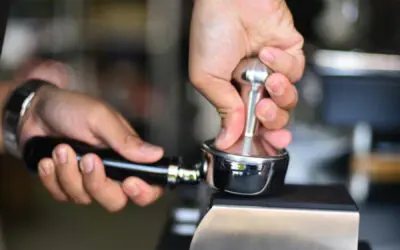We coffee lovers live in two worlds: the morning rush for caffeine and the weekend pursuit of the perfect cup. Yet between these moments lies a truth many ignore—your espresso machine is quietly suffering, begging for the care it needs to serve you faithfully.
Let me share the maintenance secrets that separate the casual user from the home barista who draws gasps of delight from friends with every cup.
Why Your Espresso Machine Is Secretly Dying
Your machine’s greatest enemy isn’t cheap beans or hard water—it’s neglect. The buildup occurs silently, invisibly. First, oils cling to the shower screen. Then, mineral deposits form in hidden chambers. Before long, your once-bright brew turns dull, bitter, even rancid.
“I spent almost $2,000 on my machine but never considered maintenance,” admits my buddy, Marcus, himself a home barista. “Six months later, my shots tasted like metal and ash. The repair cost nearly $600.”
Don’t be Marcus. Your maintenance plan starts today.
The Three Boiler Systems (And Why They Matter)
Before looking into maintenance schedules, you must understand what lives inside your machine. Three main boiler systems exist, each demanding different care:
- Single Boiler (Like Gaggia Classic Pro): One boiler handles both brewing and steaming, switching between temperatures. These machines are simpler but require more frequent descaling since the boiler works overtime.
- Heat Exchange (Like Rocket Appartamento): One boiler maintains steam temperature while a copper tube running through it heats brew water separately. These need regular flushing to prevent stale water in the exchange tube.
- Dual Boiler (Like Breville Dual Boiler): Separate boilers for brewing and steaming work independently. These are most complex and require careful attention to both systems.
Knowing your system determines your maintenance needs. Let’s break down what to do and when.
Your Weekly Ritual: The Cleansing
Weekly maintenance isn’t just cleaning—it’s a ritual that reconnects you with your machine. Set aside 15 minutes each Sunday night for these essential steps:
For All Machines:
- Backflush with water: Run your machine’s clean water cycle or manually backflush to clear coffee oils from the group head.
- Wipe the steam wand: Remove the wand tip and soak in hot water while scrubbing the wand itself with a damp cloth.
- Empty and clean the drip tray: That forgotten water breeds bacteria that can taint your coffee’s taste.
- Wipe exterior surfaces: Coffee oils become rancid within days. That film on your machine isn’t patina—it’s spoiled food.
For Heat Exchange Systems:
- Cooling flush routine: Run water through the group head for 5-10 seconds before brewing to clear overheated water.
“The weekly cleaning ritual added five minutes to my morning,” says the now repentant Marcus. “But it saved me from the bitter, sour shots I used to make on Fridays when the machine was at its dirtiest.”
Monthly Maintenance: The Deep Cleanse
Once monthly, your machine needs deeper attention. I’m not sure Marcus is doing this consistently yet. Baby steps. I have no doubt he will get that this is when you really address issues before they become problems:
For All Machines:
- Chemical backflush: Use a proper espresso cleaner (not dish soap!) to dissolve coffee oils trapped in the solenoid and group head.
- Descale (for single boilers): Single boiler machines need monthly descaling in hard water areas.
- Clean the group gasket and shower screen: Remove these parts completely and soak in cleaner.
- Examine all seals for damage: Look for cracks or hardening that might cause leaks.
For Dual Boiler Systems:
- Drain and refill steam boiler: This prevents mineral concentration that can damage heating elements.
“I ignored monthly maintenance for a year,” advises Tyler, a mutual friend to Marcus and I. “When I finally removed my shower screen, I found what looked like black tar underneath. My shots improved dramatically after one proper cleaning.”
The Seasonal Deep Dive (Every 3-4 Months)
As seasons change, your machine needs deeper care:
For Heat Exchange and Dual Boilers:
- Descale both systems: Follow manufacturer instructions carefully—some dual boilers have specific descaling procedures.
- Check and clean solenoid valves: These tiny parts control water flow and often become clogged.
- Lubricate moving parts: Apply food-grade lubricant to cam levers and group head mechanisms.
For All Machines:
- Inspect water lines for scale or damage: Look for discoloration or brittleness.
- Clean inside the water tank: Biofilm can form even in regularly changed water.
The Annual Overhaul: Prevention Is Cheaper Than Repair
Once yearly, consider these more intensive steps:
- Replace group gaskets and O-rings: These rubber parts harden over time.
- Check boiler heating elements for scale buildup: Scale-covered elements use more electricity and eventually fail.
- Calibrate pressure and temperature: Use an external thermometer to verify your machine is hitting proper brewing temperatures.
- Consider professional service: Even dedicated home baristas benefit from expert eyes once a year.
Now, speaking for myself (lessons learned the hard way), the $150 I spend on annual maintenance has kept my 12-year-old La Marzocco running perfectly. Meanwhile, my neighbour has replaced his cheaper machine twice in the same period. There’s only so many times you can claim it on warranty!
Why This Matters: The Truth About Machine Longevity
Your espresso machine isn’t just an appliance—it’s a collection of precise instruments working in harmony. Mine costs more than by fridge and stove combined. A properly maintained machine doesn’t just last longer; it produces better coffee throughout its life.
The difference between mediocre and magnificent espresso often isn’t the beans or even the barista’s technique—it’s the machine’s condition. A clean machine extracts evenly, maintains proper temperature, and creates consistent pressure. You hear me Marcus!?
Most importantly, regular maintenance develops your relationship with your machine. You begin to notice subtle changes in performance before they affect your coffee. You become attuned to normal sounds and operations. You transform from user to caretaker.
The Barista’s Promise (to their self)
Commit to this maintenance schedule, and your machine will reward you with years of perfect espresso. Neglect these rituals, and even the most expensive equipment will disappoint.
What maintenance step have you been skipping? Share in the comments—your confession might save someone else’s machine!



0 Comments